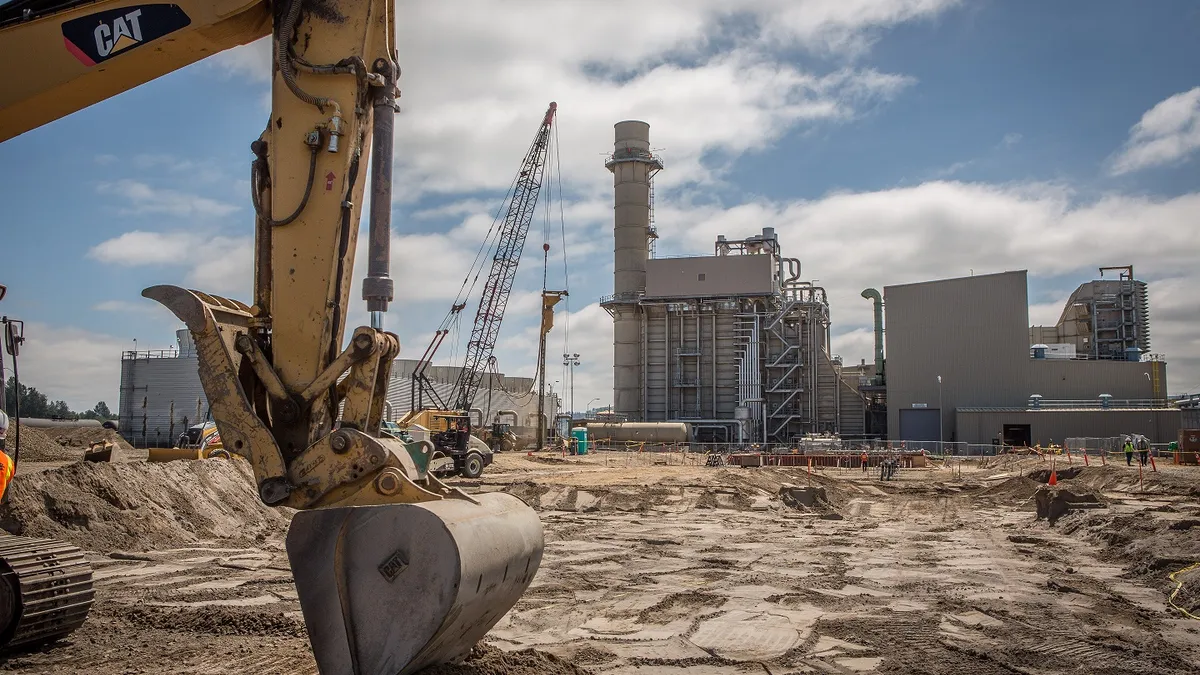Halfway through, 2018 is shaping up to be a surprising year. Year-to-date nonresidential construction starts are down 5.5% compared to the same timeframe in 2017, and June 2018 compared to June 2017 starts are down by 6.3%. Although the weaker-than-expected commercial and institutional numbers (-23.7% and -12.3%, respectively) are a bit of a surprise, the bigger surprise, says ConstructConnect’s chief economist Alex Carrick, is the strength in industrial and engineering segments, which saw increases of 35% and 13%, respectively, according to ConstructConnect’s latest Construction Industry Snapshot.
Industrial and engineering
Carrick attributes part of the industrial and engineering growth to the rise in massive energy-related projects, fueled largely by the U.S.’s increasing self-reliance in the sector on account of hydraulic fracturing, as well as a loosening of drilling regulations. Domestic supplies are up while reliance on imports is down. Carrick points to two new pipelines this year alone — the Atlantic Coast Pipeline and Mountain Valley Pipeline — as well as chemical and petrochemical plants in Louisiana, polyethylene plants in Texas and Shell’s ethane cracker plant in Pennsylvania. Each project has a price tag in the billions, making them big influencers in the overall statistics.
Foxconn Technology Group’s 120,000-square-foot campus in Wisconsin, projected to cost $10 billion, also bolstered numbers. As of Tuesday, Foxconn had hired 37 contractors to perform various scopes of work or provide services.
Commercial influences
Despite downticks in commercial and institutional construction, there’s plenty to keep an eye on and many factors that will impact future growth.
Changing demographics are impacting education-related construction, for one. As more students enter grades K-12, demand for such facilities will increase. Conversely, however, higher education is seeing less demand (-28.6% year-to-date) as fewer people enter such institutions due in part to an unemployment rate of 4%. “That has been an incentive for young adults to get into the labor force and start making money rather than going to college campuses,” Carrick said. “Enrollments from domestic young adults are falling and the number of foreign students who have been coming to the U.S. [for college] has been declining as well.”
At 22% growth in this year's first-half compared to last's, hotel/motel construction remains strong, though Carrick suspects that boom may have hit its peak since the recent volume of starts are not as bullish as they were in the first half of the year.
Private office construction was down 34%, ConstructConnect’s report also shows. But declining vacancy rates and the high-tech sector’s growth should make the lull short-lived. “One of the major drivers of the U.S. economy, if not the major driver, is the high-tech sector,” said Carrick. “Workers in the high-tech sector need office space. If you look at construction, employment and employment growth across the U.S., the best cities are the ones that have a strong high-tech presence.”
As retail continues its march toward online dominance, demand for retail space is down but demand for warehouse space will grow. Along with warehouse construction, Carrick is seeing significant data center projects. Facebook alone has built at least four major data centers in the past year.
Transportation terminal projects, up nearly 61% from last year's first half, and airport terminals in particular, hold interest for Carrick. “All the major airports have huge expansion programs in the works, which certainly will be a source of major construction going forward,” he said. “What I find really fascinating about airports is that in a sense they’ve become the last bastion of bricks and mortar in retail because airports are now, in essence, giant shopping malls. They have captive consumers while people are there waiting for their planes. There are all kinds of things in today’s newer airports that are geared toward shopping.”
Future considerations
President Donald Trump’s administration is seen as pro-business to many in the industry, Carrick said. That perspective, combined with measures to lower the corporate tax rate, lessen regulations and provide incentives for firms to bring work back to the U.S. from overseas, are positives for capital investment, he noted, adding that the president is trying to signal to businesses that they should start opening their wallets again.
Other government initiatives, however, complicate matters. “Things like trade, the future of NAFTA, tariffs, inflation heating up, and climbing interest rates introduce danger as to whether there might be curbs on construction activity from these outside sources,” Carrick said. “That’s where the uncertainty is, and uncertainty is a negative for construction. Owners don’t like to commit to making huge spending plans when they’re not sure about the climate they’ll be operating in five or 10 years from now.”
Carrick circles back to the high-tech sector when discussing what to keep a close eye on moving forward. That growth opportunity is paired with the fact that baby boomers will all be aged 55 or over by 2020 and retiring en masse, which means much of the working-age population will be those from younger generations.
“Younger people have learned things differently,” he said. “They’re used to working digitally. These are the people who from 2020 on will begin to really start making decisions with companies. People in older generations think that high-tech innovation has caused rapid changes to this point in time. Those rapid changes from high-tech are just going to skyrocket from 2020 on. That’s going to have an influence on everything — on construction processes and the kinds of buildings that are built. It’s going to impact society.”






















